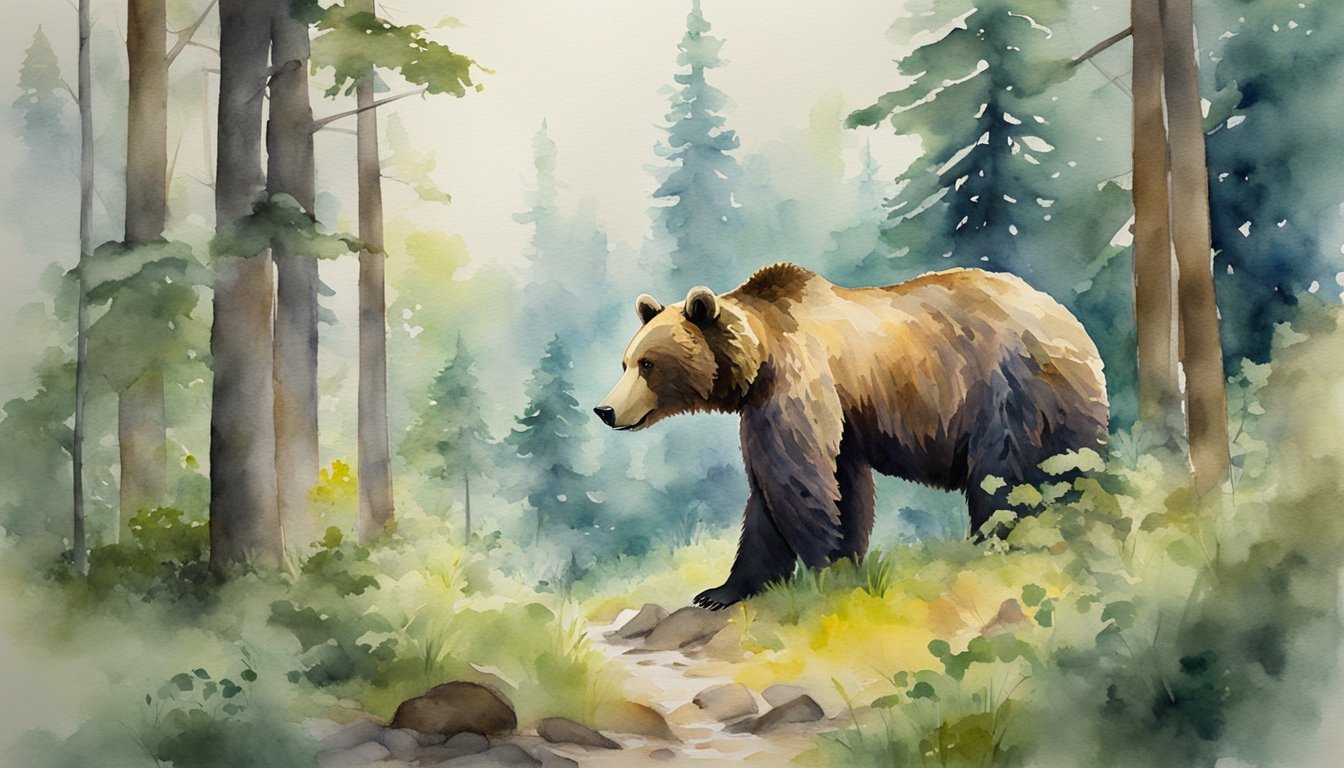Grizzly Bear Characteristics and Habitat
The grizzly bear, known scientifically as Ursus arctos, exhibits unique physical features and an adaptive diet which allow it to thrive across a variety of North American habitats.
Physical Features
Grizzly bears are distinguished by their impressive size and distinctive physical characteristics. Adults can weigh between 400 and 1,500 pounds, with males generally heavier than females. Their fur can range from light tan to dark brown, with individual hairs often having white or silver tips, contributing to their ‘grizzled’ appearance. A prominent hump on their shoulders, which is actually a muscle used for digging, is another key identifier. Grizzlies also possess long claws that can measure up to four inches, aiding in digging for food and for defense.
Diet and Feeding Habits
With an omnivorous diet, grizzlies have a varied menu that commonly includes roots, berries, fish—especially salmon—rodents, moose, and carrion. They have a remarkable ability to gain a significant amount of weight during the summer and fall, in preparation for hibernation during the winter months.
Habitat Range and Distribution
The grizzly bear’s range once included much of western North America, but they are now primarily found in Alaska, western Canada, and isolated regions in the lower 48 states of the United States, such as Montana, Wyoming, and a small population in Washington. Ideal grizzly habitats are diverse, including forests, alpine meadows, and in the coastal regions where salmon is plentiful. They are a critical part of the ecosystem, impacting the environment from the distribution of seeds to the control of other animal populations.
Grizzlies are increasingly rare in places like Idaho, California, and British Columbia, where the regions’ growing human populations have led to habitat fragmentation and increased encounters between bears and people. Despite these challenges, conservation efforts are ongoing to protect the majestic grizzly and its habitat.
Grizzly Bear Behavior and Conservation

In exploring the intricacies of grizzly bear behavior and the conservation efforts needed to protect these majestic mammals, one learns of the complexity of their life cycles and the impact of human activities on their survival.
Reproduction and Lifespan
Grizzly bears reach sexual maturity around five to eight years of age, with females generally maturing earlier than males. The breeding season occurs from May to July, with mothers giving birth to one to four cubs, usually in the winter den. The cubs will nurse for several months and often stay with their mother for up to three years. Grizzlies can live up to 25 years in the wild, with females tending to live longer than males.
Winter Hibernation
During the winter months, grizzlies enter a state of hibernation that can last from five to seven months. Prior to this period, they undergo hyperphagia, a phase of excessive eating to accumulate fat. They dig dens on north-facing slopes for consistency in temperature and snow accumulation. Throughout hibernation, their body temperature slightly decreases, and their metabolism slows significantly, allowing them to conserve energy while they subsist on stored body fat.
Conservation Status and Threats
Grizzly bears were once numerous across the Great Plains and into Mexico, but their range has since dramatically receded, primarily due to human expansion and habitat loss. Today, they’re considered threatened in the contiguous United States. Main threats to their survival include conflict with humans, diminished food sources, and reduced genetic diversity. Parks like Yellowstone National Park serve as critical bastions for the protection and study of remaining grizzly populations. Conservation measures focus on mitigating human-wildlife conflicts, protecting habitats, and educating the public on coexistence strategies.

